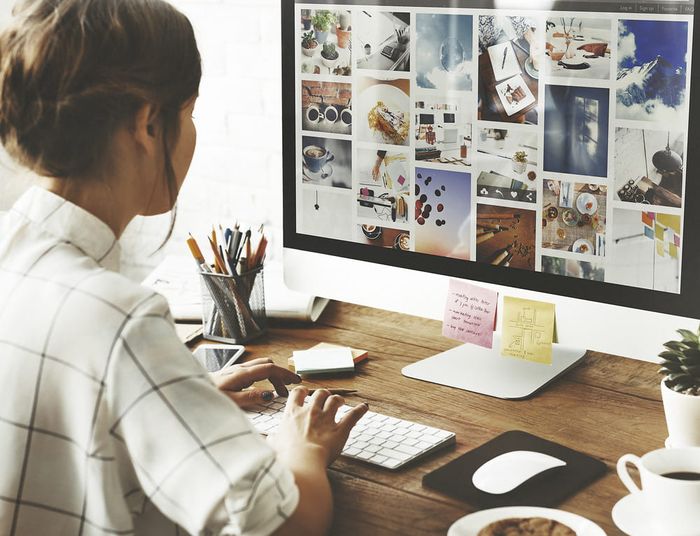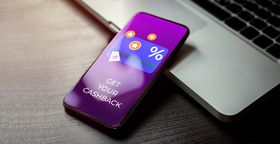The Complete Guide to Shopify Image Sizes 2024
Learn actionable tips to create a visually compelling, lightning-fast store that converts.
Published June 30, 2024.

The right image sizes can make or break your store's success. And optimizing your images is the secret weapon you need to stand out in the crowded eCommerce landscape. With the right approach, you can enhance your store's visual appeal while ensuring that it loads quickly and provides a smooth, user-friendly experience for your customers.
This guide covers why image sizes matter, the most common mistakes to avoid, and the best sizes for your product photos, logos, and other images. Plus, we introduce you to a helpful tool that makes optimizing your product pictures easier.
» Speed up the process of editing product images
Meet the Expert
Adeel Qayum is a digital content strategist with over a decade of experience creating effective copy for SaaS and B2B companies. He has a Master's Degree in Digital Marketing and specializes in long-form content creation. Adeel has worked with notable clients like Shopify, Oberlo, and AfterShip.
How Does Image Size Impact Your Site?
Images greatly impact eCommerce site speed and user experience. With images making up 75% of a web page's weight, unoptimized images can slow down your site significantly. So, use optimal image sizes to enhance performance and speed; faster sites get 3x more conversions than slower ones.
» Discover why you need to optimize the images in your Shopify collection
3 Common Shopify Image Size Mistakes
1. Uploading Huge, High-Res Images
Many store owners upload high-res images without considering page load times. To reduce file size while maintaining quality, compress images before uploading them. Tools like Egnition's All-In-One Image Master or Shopify's built-in image editor can help.
» Find out how many images a product can have in Shopify
2. Forgetting to Optimize for Different Devices
Another common mistake is not optimizing images for different devices, causing poor layouts on mobile or tablets. Set a consistent image size and aspect ratio for all product images to ensure a uniform look across your site.
» Follow these steps to optimize your Shopify product images
3. Using Inconsistent Image Sizes for Products
Some store owners use varying image sizes for products, which can result in a disorganized appearance. Establish a standard size and aspect ratio for all product images to maintain a cohesive and professional look on your product pages.
» Understand how to manage products on Shopify
Shopify Product Image Size Best Practices
Follow these best practices for product image sizes and aspect ratios to maximize your Shopify store's visual appeal and performance.
- Use 2048 x 2048 pixels (px) for optimal Shopify product images. This ensures high quality when zoomed in, speeds up page loading, and centers your photo's subject for clear mobile viewing.
- Choose appropriate sizes for different image types. Gallery images can be smaller, around 800 x 800 px, while main product images can be up to 2048 x 2048 px.
- Keep file sizes under Shopify's maximum of 20 MB. Anything larger won't be accepted.
- Select aspect ratios that work well across devices. Use a 1:1 aspect ratio for square product images and a 3:1 ratio for rectangular product images.
Tip: To enhance your Shopify store's visual appeal, choose image sizes and ratios that best showcase your products. Analyze how different ratios affect your store's design and select the ones that most effectively highlight your products' features and quality. This simple step can make a significant difference in your store's overall presentation and customer experience.
» Learn how to change product image sizes in Shopify
Specific Image Types
Logos
I recommend a size of 200 x 200 px for Shopify store logos to ensure visibility without overpowering the webpage. That said, consider your Shopify theme's specific requirements.
Example: The Turbo theme suggests 400 x 100 px for the main menu logo, 100 x 50 px for mobile, and 250 x 200 px for the footer.
Always check your theme's documentation to select the optimal logo size based on its placement.
Banners and Sliders
For Shopify homepage banners (hero banners), the ideal width is 1200-2500 pixels, and the height is 400-700 pixels. But many themes recommend a 1800-pixel width for good visibility on desktop and mobile devices. These banners' most common aspect ratio is 16:9, which suits wide displays.
For sliders, use a width of 1200-2000 pixels, with 1600 pixels often suggested for optimal clarity across screen sizes. The height usually ranges from 400-600 pixels, depending on the theme.
» Find out what mobile image size is recommended in Shopify
Other Image Types
To optimize other image types in your Shopify store, consider the following recommendations:
- Featured blog image: For blog posts within your Shopify store, use 1800 x 1000 px. This ensures crisp and visually appealing images on larger screens while adjusting well to mobile devices.
- Images within content: For images embedded within blog content or pages, a size of about 1000 x 350 px works best. This balances visibility and layout integration across different device screens.
- Background images: The ideal size for Shopify background images is 1920 x 1080 px. This resolution covers a full HD aspect and provides a clean, detailed backdrop across devices. Keep in mind the maximum allowed size is 1442 x 1442 px, and the minimum required size is 1024 x 768 px to maintain image quality.
» Know what is the best featured image size in Shopify
How to Optimize Images With the All-In-One Image Master
Egnition's All-In-One Image Master gives you a streamlined solution for organizing images on your online Shopify store. It can address common image management challenges you may face while enhancing your site performance and user experience. This tool offers the following key functionalities:
- Image resizing and compression: Resize bulk images to the ideal dimensions for different product views, like main and gallery images, without losing quality. It compresses images to comply with Shopify's 20 MB file size limit, helping to maintain aesthetic appeal while improving loading times.
- One-click presets for common image types: Its pre-configured presets allow you to quickly apply best practices for logos, banners, sliders, and blog post images with just a click.
- Automatic mobile optimization: You can automatically adjust image sizes and aspect ratios for mobile devices, ensuring a consistent and professional appearance across all platforms.
- Batch processing: Manage large volumes of images by resizing and compressing them in batches, saving time that you can redirect to other business activities.
- Improved website speed: Optimizing images for size and format can boost your Shopify store's load times. This can enhance user satisfaction and increase conversion rates by reducing the likelihood of visitors leaving due to slow-loading pages.
- Consistent visual styling across products: Maintain a consistent style and quality across all product images. This tool also lets you review and customize automatically generated emails for your marketing efforts.
Enhance Your Store's Success Through Optimized Images
Investing in image optimization is an investment in your store's success. By presenting high-quality, visually appealing images that load quickly and consistently across devices, you create a positive user experience that encourages customers to browse, engage, and make purchases. So, take the time to optimize your images and watch your Shopify store thrive.
» Try these tricks to make your Shopify store a better one

